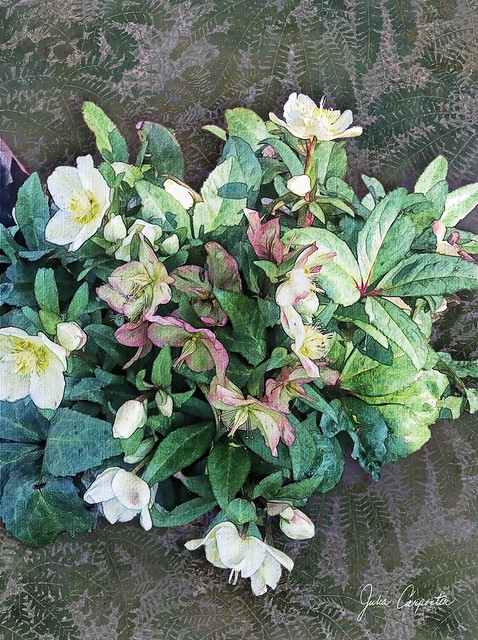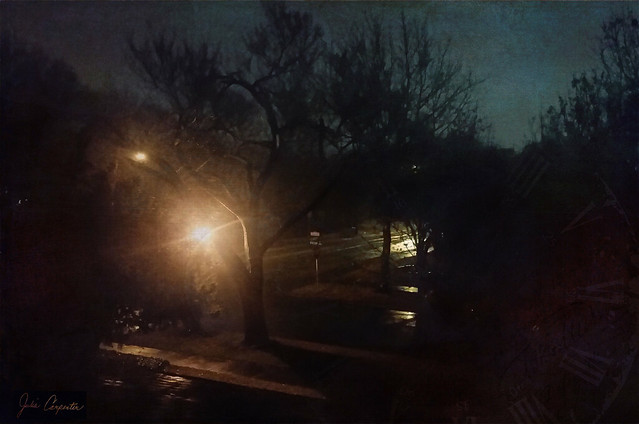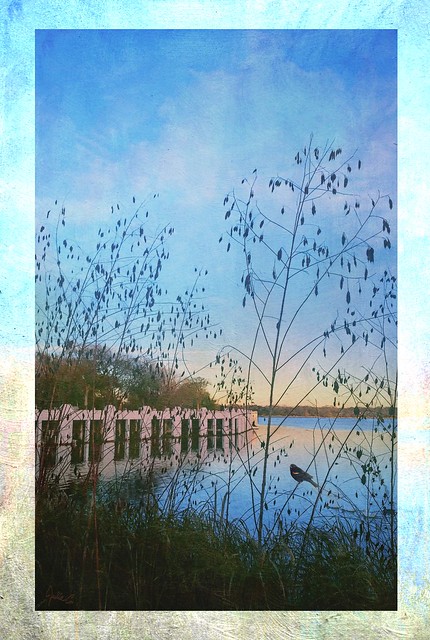Our city lot is generously shaded by large trees, so I'm
always on the lookout for plants that thrive in shade and in our
North Texas soil and climate. Hellebores fit the bill, although,
alas, they are both slow-growing and a bit pricey. You can't just
plant a few and expect them to spread. There are, however, enviable
swaths of them at the Dallas Arboretum where I snapped the original
photo.
 One of my Christmas presents (from me to me) was Topaz ReMask, a masking plug-in for Photoshop, so I tried it out on the
hellebore image with great success. I played around with just the
hellebores on a transparent background, using two other Topaz plug-ins, Adjust and Simplify on separate copies, then Akvis Sketch on another copy. I also enhanced the pinks with a Selective Color
adjustment layer.
One of my Christmas presents (from me to me) was Topaz ReMask, a masking plug-in for Photoshop, so I tried it out on the
hellebore image with great success. I played around with just the
hellebores on a transparent background, using two other Topaz plug-ins, Adjust and Simplify on separate copies, then Akvis Sketch on another copy. I also enhanced the pinks with a Selective Color
adjustment layer.
The background consists of
soft, cloudy neutrals on one layer, a deep purple layer over that and
two copies of a photo of ferns, one filtered with Topaz Simplify and
one with Akvis Sketch. The real magic happens with the blending
modes, and there are so many possibilities producing such different
effects that I often find it difficult to decide which looks best.
(And also find it difficult to stop tweaking.) I finally went with
this result which I think makes the ferns look as if stamped or printed on a
slightly metallic surface, and they ground the hellebores without
distracting from them. There are also a few light touches of gold on
top on the background image.
It's been a while since
I've done anything “creative” in Photoshop. Because isn't it easy to put
aside unessential pursuits for things that “need” to be done.
But the satisfaction and pleasure that comes from those pursuits
indicate that they are indeed essential, even if the world (or
Flickr) isn't breathlessly awaiting another of my oeuvres.






















